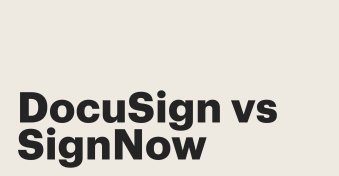The list of e-signature solutions has gotten more crowded and complicated in recent years.
While DocuSign has always been an industry leader, Citrix consolidated its standalone digital signature service (RightSignature) into its file-sharing and collaboration platform, ShareFile, in late 2023.
Today, we’re going to take a closer look at these two e-signing and file-sharing solutions to see how they compare to one another.
Let’s jump in.
Key takeaways
- DocuSign is an e-signature solution first and a file management solution second. This platform is focused on digital signature capture while offering some storage options for signed and completed documents.
- ShareFile is focused on secure file sharing and document storage, with options for e-signing limited to its Premium plan.
- Both platforms take document security seriously, offering SSL encryption and compliance with leading security standards.
ShareFile (with Rightsignature)
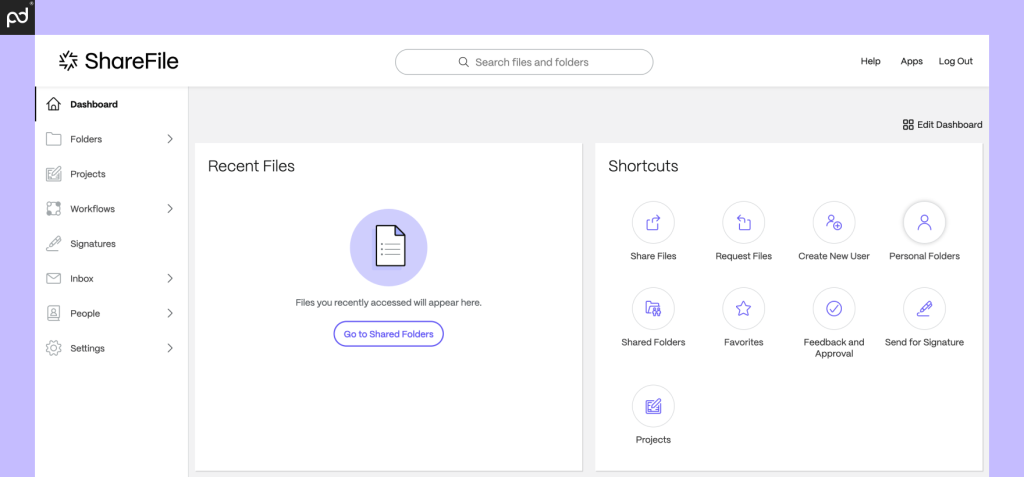
Pricing: Standard ($33); Advanced ($52.80); Premium ($82.50); Virtual Data Room ($375). Pricing based on month-to-month commitment, factoring for minimum seat requirements.
Ease of use: 8.2/10
Free trial: Yes; 30 days.
Support: Knowledge base; live chat.
Citrix ShareFile is a secure content collaboration platform for modern businesses.
While ShareFile’s primary focus is on file sharing and security, Citrix recently consolidated RightSignature, its electronic signature solution, into the ShareFile Premium plan.
This change eliminates RightSignature from the marketplace as a standalone product and replaces it with ShareFile as the Citrix solution for digital signature capture.
However, only ShareFile Premium users have access to this e-signing functionality. Users on the Standard, Advanced, and more expensive Virtual Data Room plans won’t have access to an in-house signing option.
Outside of e-signing, ShareFile offers a variety of unique features that will differentiate itself from DocuSign.
This includes live chat customer support (similar to the 24/7 support we offer at PandaDoc), dedicated client portals for file sharing and collaboration, and powerful access controls for stored files.
These features are available for all users.
Combined with the ability to sign documents on the Premium plan, ShareFile will be an excellent solution for the right user.
DocuSign
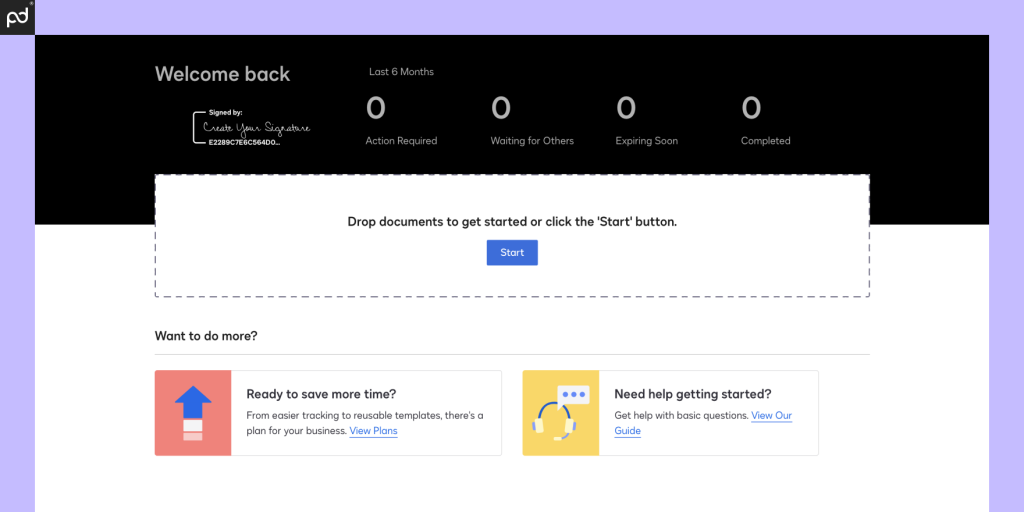
Pricing: Personal ($15); Standard ($45); Business Pro ($60). Enterprise pricing available. All pricing based on month-to-month commitment.
Ease of use: 9.0/10
Free trial: Yes; 30 days.
Support: Knowledge base; support tickets; additional support plans sold as separate packages.
As one of the leading e-signature platforms in today’s digital marketplace, DocuSign offers a formidable solution for both small businesses and large corporations alike.
DocuSign’s straightforward pricing options and document preparation workflow make it a great choice for users who are looking for a no-frills signing solution.
While you won’t find much by way of file storage or document editing here, the platform does offer a notable number of integrations, as well as payment processing, template tools, and other key features.
However, DocuSign’s greatest strength is also its weakness.
In today’s market, the platform feels somewhat narrow.
DocuSign’s e-signing workflow has been successfully replicated by other brands and platforms, who offer a similar process at lower costs or in conjunction with additional tools (such as document storage or a from-scratch document editor).
Because of this, organizations looking for both a broader feature set or teams shopping on cost may find that DocuSign’s premium solution is easily replaced by other tools.
DocuSign vs RightSignature (ShareFile) at a glance
Here’s a closer look at how DocuSign and ShareFile Premium compare with one another.
Keep in mind that ShareFile’s electronic signature tools are only available on the Premium plan.
| Plan Details | DocuSign | ShareFile |
|---|---|---|
| Plan Name | Standard | Premium |
| Core product | ||
| E-signature capture | ✓ | ✓ |
| Real-time audit trail | ✓ | ✓ |
| Notifications | ✓ | ✓ |
| Language support | ✓ | X |
| Mobile app (Android & iOS) | ✓ | X |
| Reporting tools | ✓ | ✓ |
| E-signing features | ||
| Signing order | ✓ | ✓ |
| Send to multiple recipients | ✓ | ✓ |
| Bulk send | X | ✓ |
| In-person signing | ✓ | ✓ |
| Collaboration tools | ✓ | ✓ |
| Signer attachments | X | ✓ |
| Payment gateway | X | ✓ |
| Document prep | ||
| Drag & drop fields (PDF) | ✓ | ✓ |
| Create reusable templates | ✓ | ✓ |
| From-scratch document builder | X | X |
| Pre-built template library | X | X |
| Form creation | X | X |
| Custom branding | ✓ | ✓ |
| Integrations & API | ||
| Import & storage | ✓ | ✓ |
| CRM | X | ✓ |
| Productivity | ✓ | ✓ |
| API | $ | ✓ |
| Support | ||
| Email / ticketing support | ✓ | X |
| Chat support | X | ✓ |
| Knowledge base | ✓ | ✓ |
| Phone | X | X |
| Premium support options | $ | X |
For this chart, we chose to compare DocuSign’s Standard plan against ShareFile Premium primarily due to price. Here’s a rough breakdown of how we reached that comparison.
- DocuSign Standard costs around $25 per user/month when purchasing with an annual subscription.
- ShareFile Premium costs $82.50 per month but provides three seats, pricing it at $27.50 per user/month.
While ShareFile is the more expensive option if you can’t fill the seats, it’s one of the more cost-effective solutions available for small, multi-user teams.
For single-seat users, DocuSign offers the more expensive Business Pro plan ($40/month, annually), which may be a better fit in terms of costs and features.
One final factor to consider is transaction limits:
- DocuSign limits users to 100 envelopes per user/year. (Full breakdown of DocuSign pricing limitations here.)
- ShareFile does not have transaction limits.
For power users, envelope counts and transaction limits can greatly impact the viability of the platform. If you plan on sending a high volume of documents each year (more than about 10 per month/seat), DocuSign’s limitations and caps will drive up long-term costs.
ShareFile, like PandaDoc, is one of the few providers that doesn’t seem to be restricted by usage caps. If transaction limits are a dealbreaker for your use case, it’s a solid choice as an electronic signature software.
Requirements, workflows & pricing
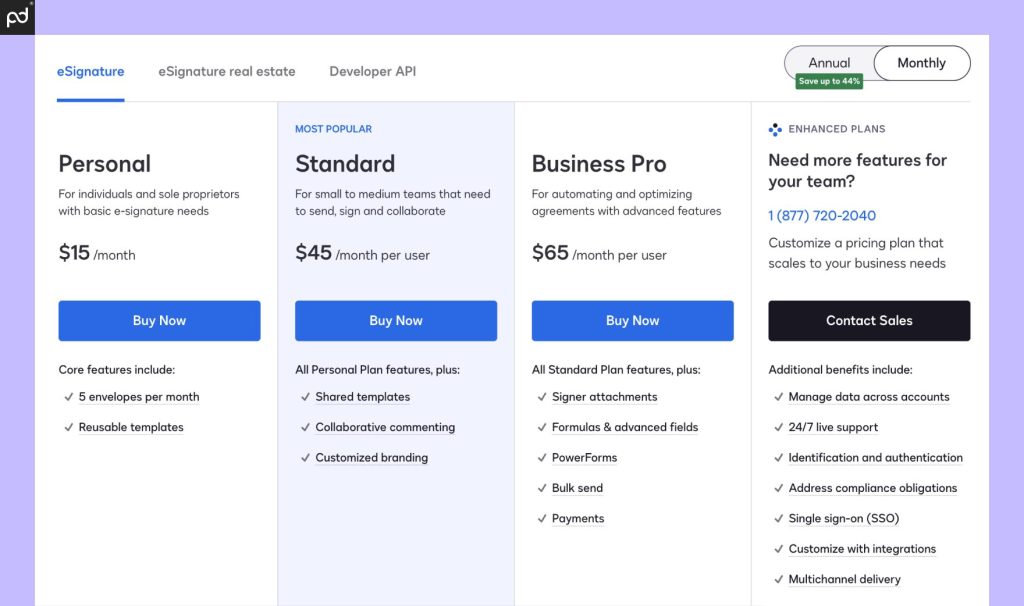
While both ShareFile Premium and DocuSign offer a similar e-signing workflow, the use case and approach that each platform offers feels completely different.
DocuSign is entirely focused on the e-signing process of the document lifecycle.
Users will upload documents that have been completed using word processing tools like Microsoft Word or Google Docs and then prepare them for digital signature capture with the DocuSign platform.
Despite its narrower scope, DocuSign actually provides a strong selection of features around this process, but most of them will require you to climb into the Business Pro plan.
That’s a substantial price increase if you have the headcount to offset the cost of ShareFile’s three-seat minimums.
At the same time, DocuSign is relatively limited beyond its scope as a document platform.
File storage, sharing, and access are centered around e-signing, and the platform isn’t designed to serve as an ideal document storage solution or file archive.
Finally, due to DocuSign’s own transaction limits, sending is limited to 100 envelopes per year or 10 per month.
Anything outside of those boundaries is likely to incur surcharges and require a custom solution from the enterprise sales team.
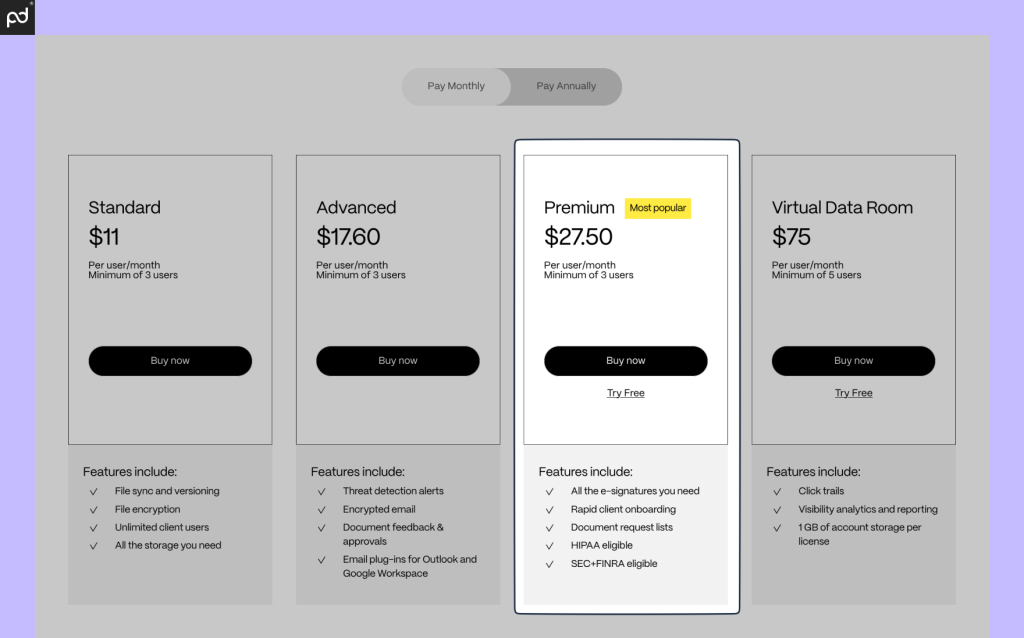
Because ShareFile is designed as a file-sharing service first with e-signing exclusive to its Premium plan, the platform’s designated use case is very different from DocuSign.
ShareFile’s onboard file storage and access controls allow the platform to become a centralized document repository for most businesses.
Sharing files and working jointly with external collaborators falls squarely within the platform’s intended use case.
By design, users will upload, organize, and control access to files and folders with granular permissions.
Files can be shared internally or externally, organized into branded workspaces, prepared for electronic signature, and much more.
It’s a seachange from DocuSign’s approach in that the ShareFile platform is intentionally engineered as a long-term workspace.
DocuSign is a built-for-purpose signing tool with limited additional usage unless you’re willing to invest in other DocuSign products like CLM or IAM.
Our suggestion
Ultimately, choosing between DocuSign and ShareFile will come down to your needs and intended use case.
If a file storage and e-signing solution both make sense for you — and if you have the headcount to support it — then ShareFile or a similar tool (Dropbox Sign, PandaDoc, etc.) could give you more for your money.
If you’re just looking for an e-signing solution, DocuSign will get the job done — but it won’t do anything else, and you may find yourself hampered by arbitrary usage limits.
- DocuSign is the ideal choice if you just need a moderate-use e-signing solution.
- ShareFile will make the most sense for users who need file management, e-signing, and have a team of at least three users.
- PandaDoc strikes a balance between ShareFile and DocuSign by offering unparalleled document editing capabilities, onboard storage, e-signing tools, and no minimum headcount.
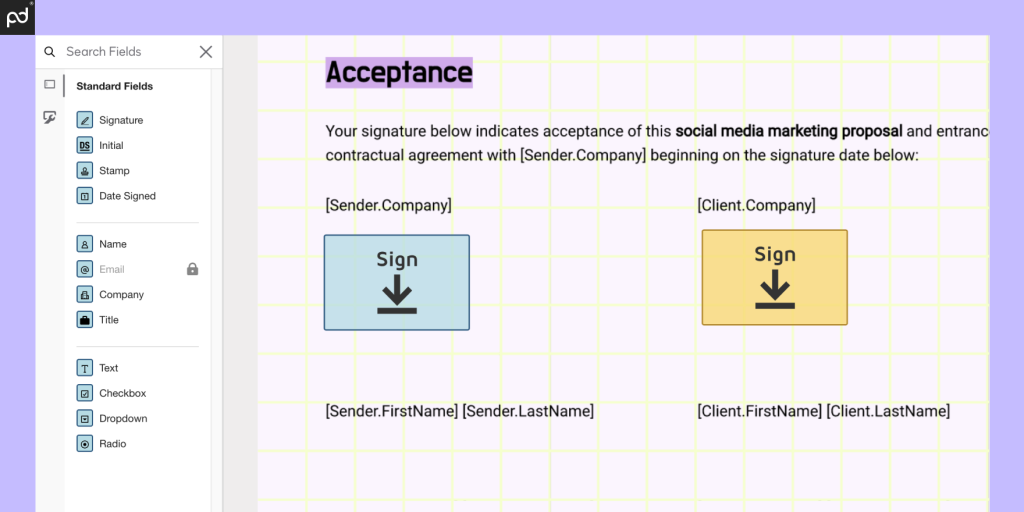
E-signing flows
While some organizations vary their e-signing workflows, DocuSign and ShareFile share a very similar look and feel when it comes to document preparation and distribution.
DocuSign users will begin by uploading a document, designating signers, and setting a signing order.
Using the drag-and-drop tools, preparers will need to place text, date, and signature fields inside the document.
Many of these fields can be formatted to prompt signers for additional information or marked as required for document completion.
At higher pricing tiers, different configurations might also be used. Payment gateways can be added to the e-signing process.
Prepared documents can also be used as templates to create PowerForms, documents that can be embedded directly into web pages as fillable forms.
However, the process is largely the same in terms of scope and functionality, no matter which fields you use to prepare your document.
When preparation is complete, you’ll send the document via the DocuSign platform.
Signers will receive an email notification, access the document, and complete it by applying their e-signature to the document.
Once the e-signing process is complete, documents are automatically and securely stored so that all parties can retrieve them.
However, if signers have feedback prior to signing the process changes.
DocuSign’s commenting tools will allow them to provide those details, but DocuSign users will need to pull the document back into a word processor and update it based on signer feedback. The document will need to be uploaded, prepared, and sent to signers again.
In some ways, the lack of an agreement is where the DocuSign process breaks down when compared to a tool like PandaDoc, which offers onboard editing and document generation. PandaDoc users can just edit the document inside the platform, make the requested changes, and send the document back.
ShareFile users have a similar stopgap measure.
Onboard co-editing tools enable users to edit Microsoft 365 documents from inside the ShareFile platform if changes need to be made.
It’s not as seamless as what PandaDoc provides, but the added flexibility can be a huge time saver.
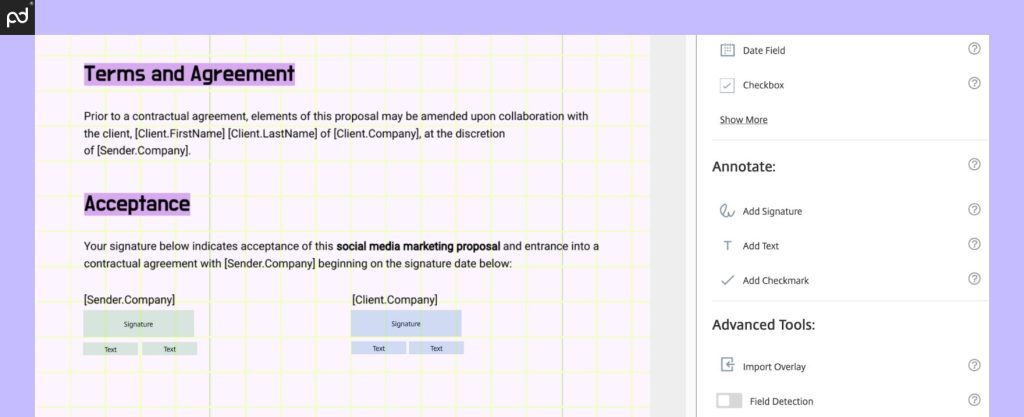
With ShareFile, the process feels both different and similar to DocuSign because of how documents are handled with the platform.
You’ll still need to upload documents to ShareFile, but you can take the time to organize them and control access in a way that DocuSign simply doesn’t support.
It’s also possible to just upload a document for e-signing with no additional controls or configurations, but doing so misses the document management aspects associated with ShareFile.
After the document is uploaded and organized, you’ll follow a document preparation process similar to DocuSign by using drag-and-drop fields to format and prepare the document. Afterward, ShareFile will send the document to signers, who can e-sign, suggest changes, or co-edit the document inside the platform to reach consensus.
When everything is finalized, you’ll be able to store the document alongside the rest of the files on the ShareFile platform.
You’ll even be able to place it inside a dedicated client workspace so that every client will have access to documents and related files on an indefinite basis.
Our suggestion
Overall, we found the nuts and bolts of the e-signing process and workflow between these two platforms to be fairly similar.
The greatest differences boil down to file management and how each platform works with users to modify documents based on feedback from signers.
Like we mentioned earlier, DocuSign is more narrow in scope than ShareFile, and that difference shows in how DocuSign documents require support from other tools to create a holistic document solution.
- DocuSign is the better choice if your primary need is to expedite and manage the e-signing process, but it falls short if signers push back or change agreement terms at the last minute.
- ShareFile’s process is similar to DocuSign, but with additional file management options worked into the front and backend.
Integrations & connectors
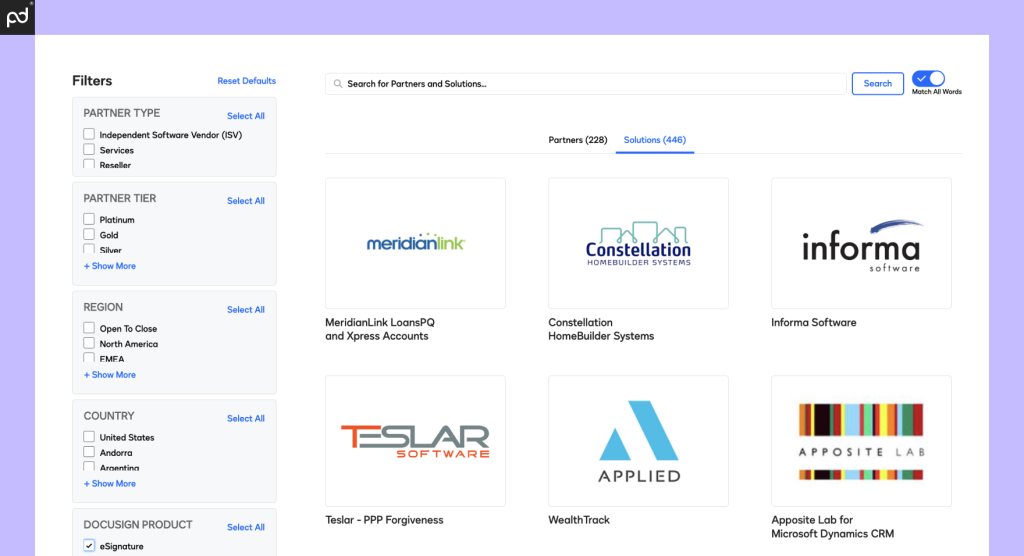
The ability to automate your workflow and integrate with the rest of your tech stack is a critical consideration for both DocuSign and ShareFile. The integrations on offer vary and both platforms handle this differently.
DocuSign offers the greatest number of integrations on the market today, and most are available by default on any paid plan.
These “partner integrations” are pre-built connectors that connect to popular systems, including CRM, ERP, and productivity tools.
Using them, you can seamlessly integrate your e-signing workflow with other processes.
Most of the connectors that DocuSign offers are very niche.
If you have an obscure piece of software in a narrow industry, it’s quite possible that DocuSign will be the only software tool on the market with an available integration.
Note that DocuSign reserves its connectivity with more commonly used CRMs (Salesforce, Microsoft Dynamics, Netsuite) behind its enterprise plans.
Likewise, payment processing (Stripe) is also restricted to higher-tier plans.
If you’re using these industry-leading tools, the only way to connect with DocuSign is through a custom-configured solution with a high monthly subscription.
The same is true for API connectors.
If you want to build a custom integration using DocuSign API, you’ll need a customized plan in addition to your regular DocuSign subscription. (The same is true for the RightSignature/Sharefile API.)
However, while DocuSign has strategically restricted their integrations in a way to maximize value, the approach is relatively straightforward.
For ShareFile users, it’s another matter entirely.
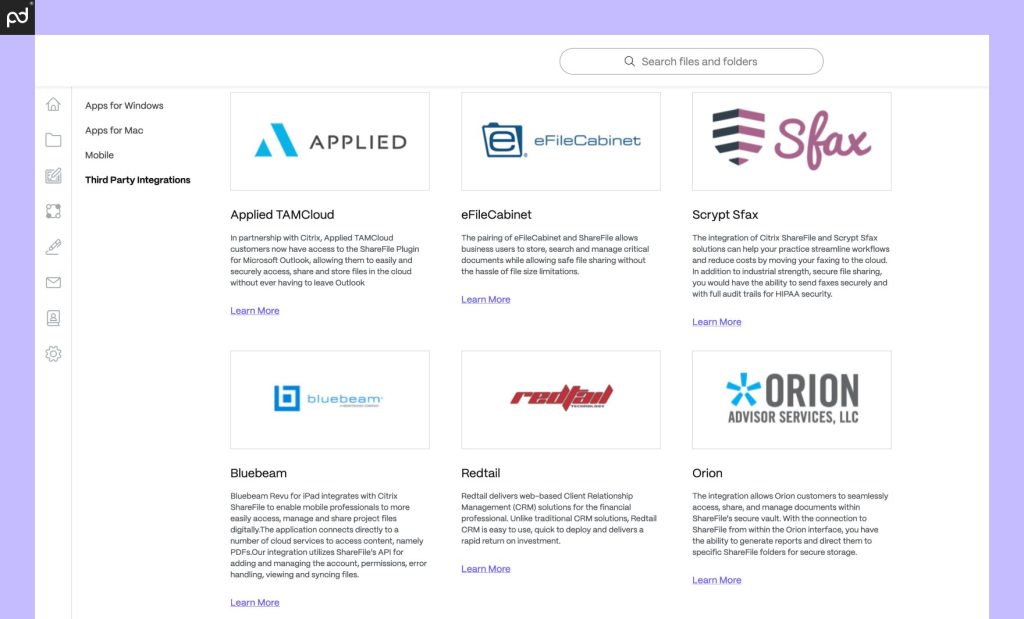
Like most DocuSign competitors, ShareFile offers a much smaller collection of integration options.
This problem is amplified further by the fact that some of the ShareFile integrations are specifically for e-signing while most options are designed to facilitate file sharing with other tools.
The reason for the confusion is RightSignature. Until late 2023, RightSignature was a standalone Citrix product with its own integrations and connectors.
Because RightSignature’s e-signing capabilities have been folded into ShareFile Premium, users seeking an e-signing solution will have access to a completely different set of connectors — the old RightSignature connectors.
That being said, we do see connectors for Salesforce, Microsoft Office Online, Quickbooks, and other popular tools along with some more niche products.
Apps for direct file access from Windows and macOS are also available.
Unfortunately, it’s unclear whether many of the connectors on offer support e-signing or if they’re only available for file sharing.
Our suggestion
Depending on your document workflow, integrations could be essential or merely “nice-to-haves.”
DocuSign and ShareFile both offer some solutions in this category, but both have their downsides and setbacks.
Both platforms offer storage connectors (Google Drive, Dropbox, etc.) to make importing easier.
Connections to CRMs, productivity tools, and specific software options will vary.
If you’re looking for straightforward integration options without confusion or the need for customized plans, PandaDoc might be a good fit.
We offer a suite of connectors for today’s most popular tools. Most are included with any subscription or can be purchased as add-ons for a nominal fee.
- DocuSign has the most robust integration library of any e-signing tool with solutions for a surprising collection of niche / obscure industry software.
- ShareFile offers integrations for file sharing and e-signing but, due to its consolidation with RightSignature, it’s difficult to tell which integrations work for which purpose.
- PandaDoc offers native integrations with leading CRMs, payment processors, and productivity tools so that you can connect your entire tech stack to your document creation and digital signature process.
Security & authentication
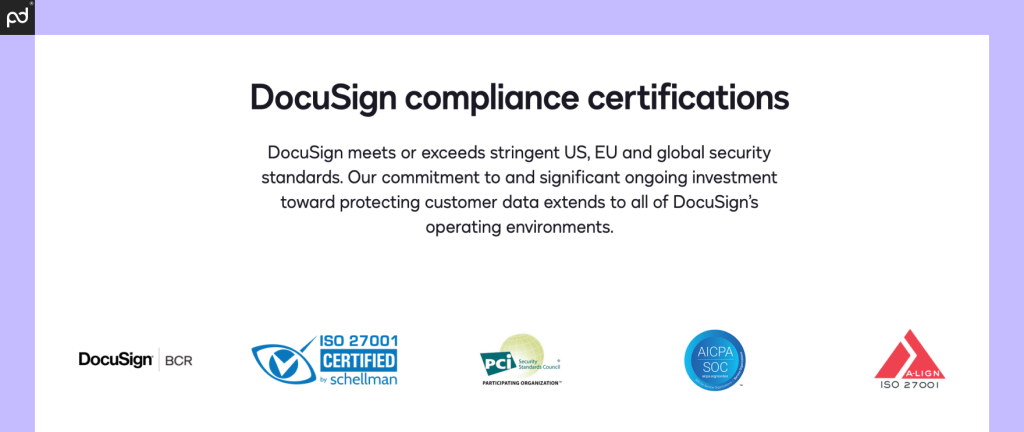
While DocuSign and ShareFile differ significantly in terms of their product offering, both companies are serious about data security.
A large part of DocuSign’s reputation centers around its focus on document security. The platform employs a multi-layered approach to protect sensitive data and ensure document validity.
DocuSign encrypts data both in transit and at rest to safeguard documents from unauthorized access.
Every step of the signing process is tracked, and detailed audit trails are created as a document moves through its e-signing process.
The company also offers tamper-evident seals for its documents and adheres to rigorous international standards, including SOC 2 and ISO 27001 (just like PandaDoc), to further demonstrate its commitment to data security and privacy.

ShareFile approaches data security in a similar way.
Like DocuSign, the company certifies its security using internationally recognized compliance standards.
This includes 256-bit encryption, along with both SOC 2 and ISO 27001 frameworks.
However, ShareFile’s security extends beyond e-signing to all the documents kept on its platform. ShareFile users can leverage granular access controls and data permissions for files stored and shared with partners and clients.
Customized client workspaces provide distinct and secure ways to share selected documents with external collaborators while protecting the rest of the data in your ShareFile account.
Like DocuSign, ShareFile protects and encrypts data both in transit and at rest, so users can rest assured that sensitive information is secure at all times.
Our suggestion
When it comes to security, the biggest difference between ShareFile and DocuSign comes down to intended platform use.
DocuSign is secure, but its use case is much smaller than ShareFile.
Documents will be secure from upload to final signature, but that protection won’t extend to documents that don’t need to be signed since they won’t make it to the DocuSign platform.
On the other hand, ShareFile is designed as a complete document repository. When you upload a document to ShareFile, it’s encrypted and protected until it leaves the service.
- DocuSign offers top-notch security, but that benefit only extends to uploaded documents that fall within the scope of the e-signing process.
- ShareFile is designed as a document repository, making its security features useful to all documents, whether or not they need an electronic signature.
Alternatives to ShareFile and DocuSign
While both ShareFile and Docusign are well-established e-signing platforms, they aren’t the only options on the market today.
In the same way that ShareFile brings a unique offering to the table with its document storage, many other companies have their own, unique take on e-signature solutions.
Here’s a quick list:
- PandaDoc
- DocHub
- Adobe Acrobat Sign (formerly Adobe Sign)
- GetAccept
- SignNow
If you’re not sure where to start, we’d recommend PandaDoc.
Our solution offers from-scratch document creation, powerful workflow automations, template controls, and much more.
PandaDoc users can fold their entire document creation process into a single platform, vastly expediting the document creation and e-signing process.
Of course, if you’d still prefer to work in Microsoft Word or Google Docs, we have integrations for that, too!
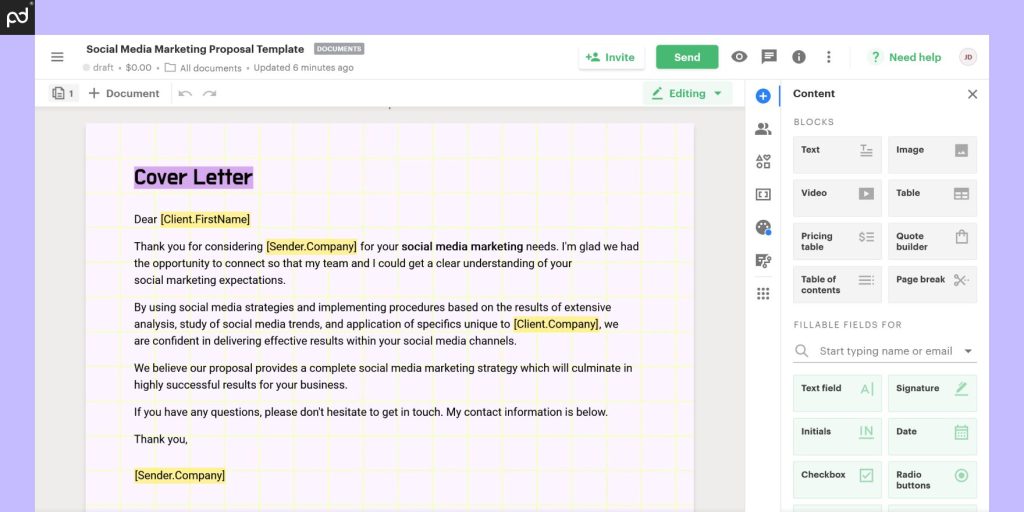
End-to-end document creation with PandaDoc
Looking for more than just an e-signing platform? In need of a centralized document management and creation tool?
PandaDoc is the answer. (Seriously, all the user reviews say so.)
We offer robust and secure e-signature tools (like DocuSign), and ample storage for all of your contracts, proposals, and more (like ShareFile).
Our powerful document editor helps users create and edit documents on the fly.
You’ll even find 1000+ templates to help you jumpstart the document creation process, a content library for all your personalized templates, modular snippets, and text blocks, and 24/7/365 live chat support.
Give us a try for 14 days or schedule a demo and see for yourself how PandaDoc can change your entire document workflow.
Disclaimer
Parties other than PandaDoc may provide products, services, recommendations, or views on PandaDoc’s site (“Third Party Materials”). PandaDoc is not responsible for examining or evaluating such Third Party Materials, and does not provide any warranties relating to the Third Party Materials. Links to such Third Party Materials are for your convenience and does not constitute an endorsement of such Third Party Materials.
Originally published April 13, 2020, updated August 7, 2024
